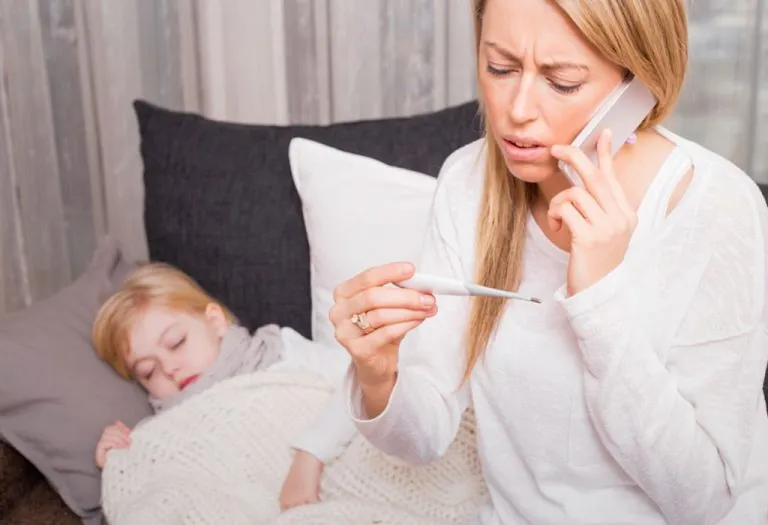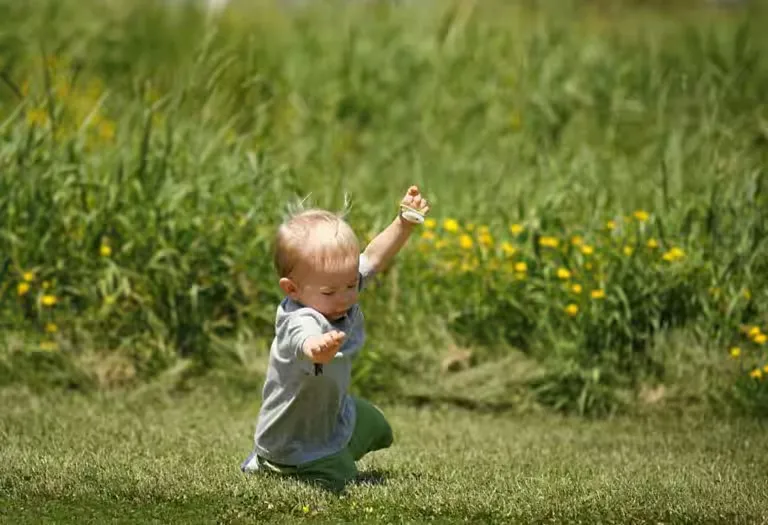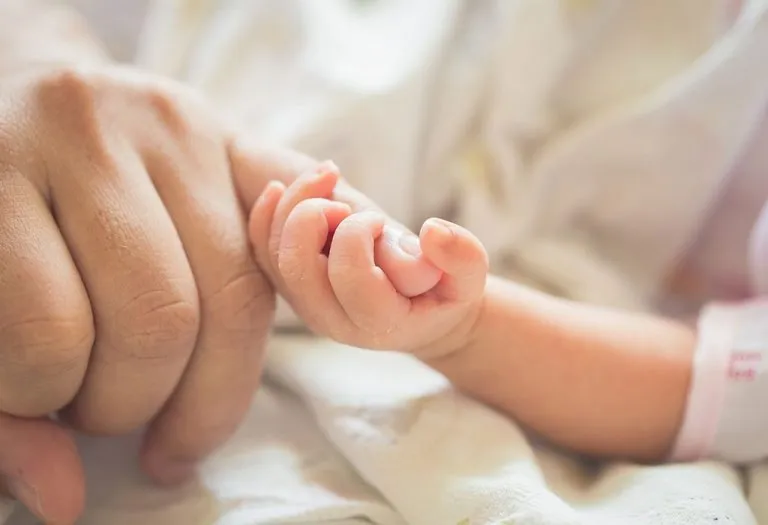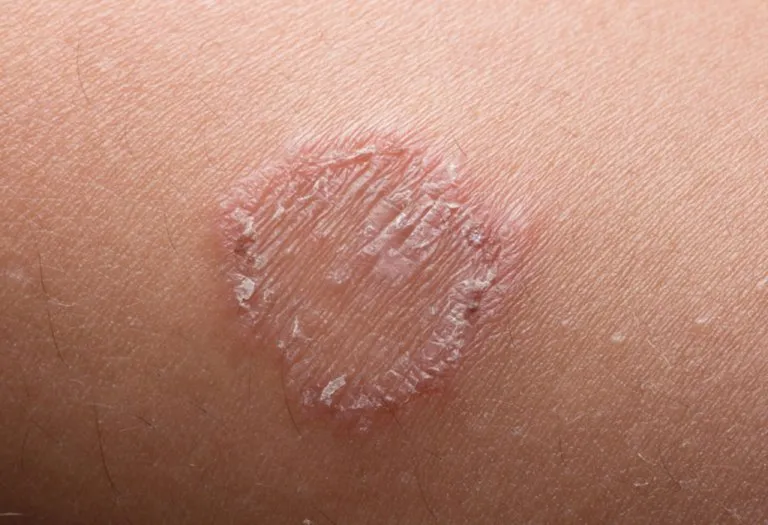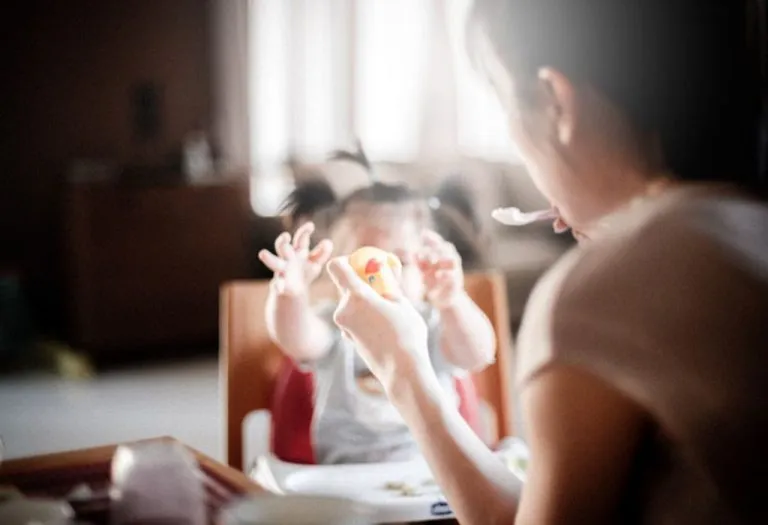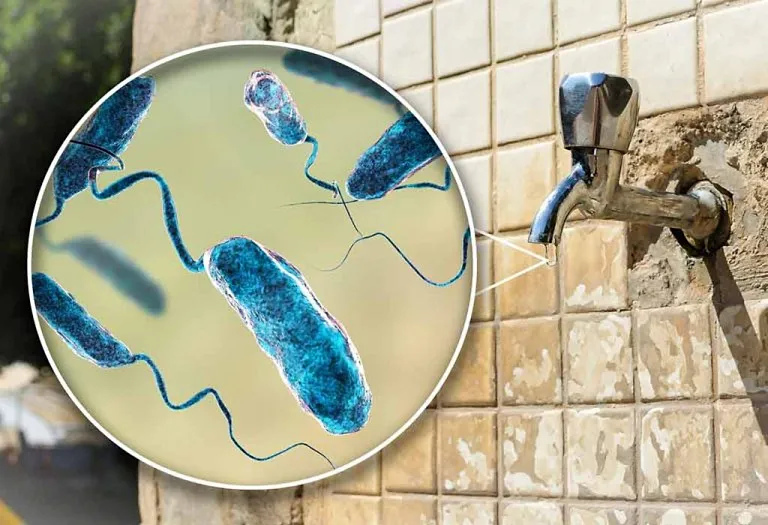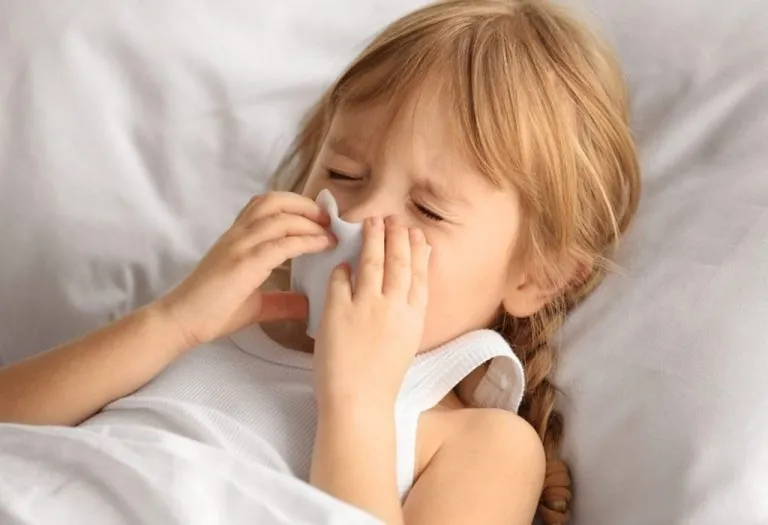Viral Fever in Babies – Symptoms, Causes & Treatment

- What Is Viral Fever?
- What Are the Causes of Viral Fever in Babies?
- Signs & Symptoms of Viral Fever in Babies
- What to Do If Your Baby Has a Fever?
- Fever Temperature for Babies
- Treatment for Viral Fever in Infants
- Home Remedies for Viral Fever in Babies
- How to Prevent Viral Fever in Babies?
- When to See a Doctor
- FAQs
Babies are a blessing, but parents go through a lot of stress and pain while raising them. They do everything possible to keep them safe and healthy. Since children do not have a well-developed immune system, several precautionary measures have to be taken to keep away viral infections from them.
As a parent, it is essential to be more attentive towards changing weather conditions since your children could be vulnerable to common infections. However, instead of panicking, you should educate yourself on the various symptoms of diseases, their causes, and how to seek proper treatment from a doctor. To learn more about the viral fever in babies and how long does viral fever last in babies, check out the post where we have listed everything you need to learn.
What Is Viral Fever?
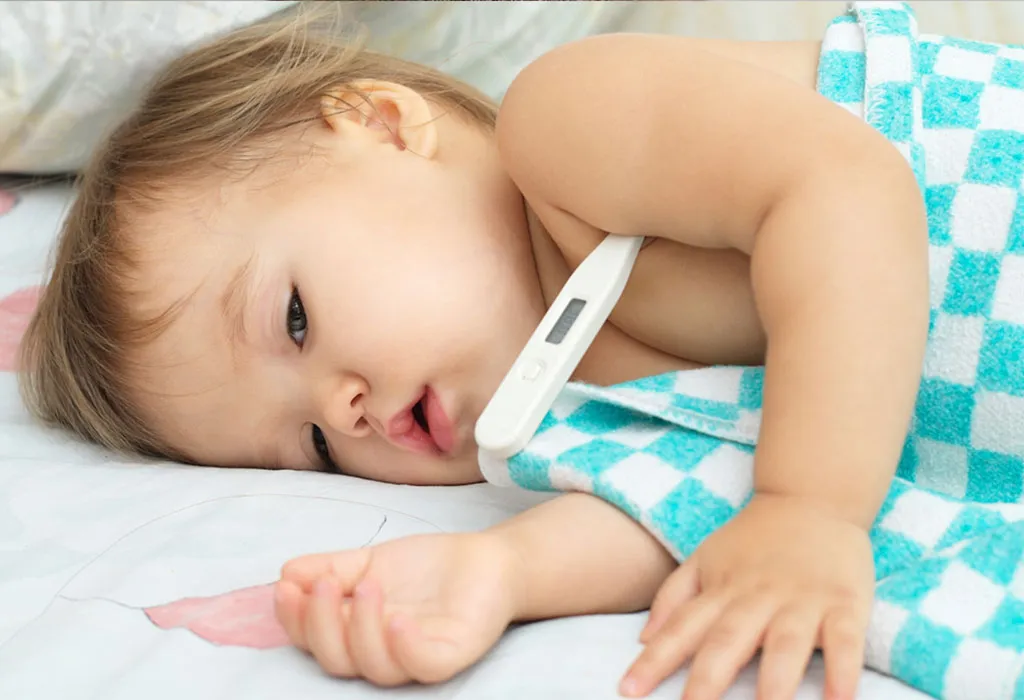
Nothing is more upsetting than seeing your child suffer. Viral fever in infants causes them discomfort. Due to the humid climate and wet surroundings during monsoon, children become more susceptible to germs. Therefore, they become prone to viral infections like cold and flu.
Although viral infections are common among people of varied ages, children are more at risk of catching a viral fever. It is a contagious illness. For instance, if a person who has a viral infection sneezes or coughs near a healthy person, the latter may catch the virus as well. This happens because the virus tends to transfer through the air and infect a person.
Kids are most likely to get infected when they are in close contact with each other in places such as schools, playgrounds, or childcare centres. It is a common myth that the body temperature rises only when a person has a fever; the fact is that the temperature of a person’s body keeps varying throughout the day. Fever is a common illness that usually occurs because of seasonal changes. It causes the body temperature to rise above the normal level (i.e. 98.6° F or 37° C). This is not just a symptom but a sign that indicates the natural reaction of the body towards illness.
Although a fever suggests that your child is unwell, symptoms such as body ache, poor appetite, and lethargy might be an indication that a virus has infected your infant.
Parents might also notice that their child falls ill frequently and catches other infections shortly after recovering from the previous one. This is a common phenomenon as children can have 6 to 10 viral infections when they are younger. However, the frequency gradually reduces as they develop a stronger immune system.
What Are the Causes of Viral Fever in Babies?
There are plenty of reasons for viral fever in babies. It is not necessary that your baby has a fever due to a viral infection. There are instances when this could occur due to a heat stroke or a bacterial infection as well. It is important to know the difference.
A baby’s body shows symptoms of viral fever when it reacts to the illness resulting from a virus. Such kinds of viral fevers usually do not require antibiotics, as antibiotics do not have any effect on the virus and recede in three days.
A bacterial fever occurs due to a bacterial infection. Examples of this include an infection in the urinary tract and ears, bacterial pneumonia, or bacterial meningitis. Although bacterial infections do not occur as frequently among children as viral infections, it still becomes a matter of concern if not treated on time and can cause severe illnesses.
Signs & Symptoms of Viral Fever in Babies
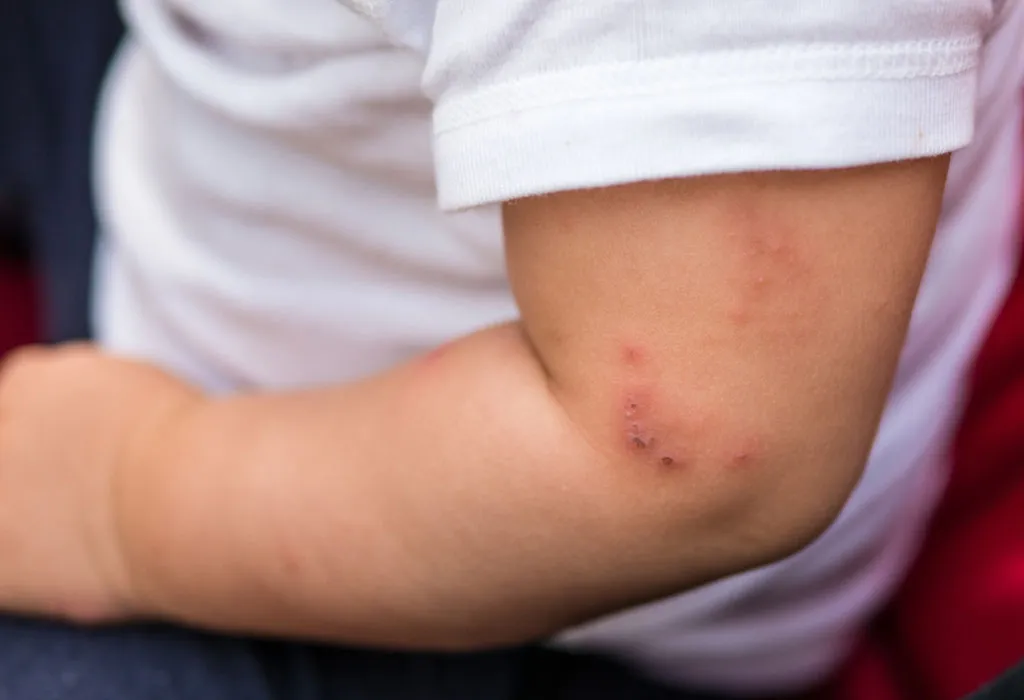
Although a fever is the first symptom that indicates that your child is unwell, other signs that indicate whether he needs urgent medical treatment or not are listed below.
- Your child has a sore throat and is shivering.
- He is suffering from diarrhoea and cough for over two weeks.
- He looks fatigued due to frequent vomiting and diarrhoea.
- He is facing difficulty in breathing (taking shallow or rapid breaths) due to a blocked or runny nose.
- You notice a rash on your child’s skin and redness in his watery eyes. Kids with viral fever usually look pale.
- If the fever persists for more than three days, and you are unable to control it with the prescribed medication, and there is a gradual rise in temperature, i.e. above 100.4° F.
- He is feeling lethargic and wants to sleep often.
- He is complaining of a headache or pain in the stomach.
What to Do If Your Baby Has a Fever?
If your child is unwell, you should monitor his body temperature at regular intervals. If the temperature keeps rising, your child will need immediate medical care.
Some viral infections, such as diarrhoea, sore throat, ear infections, and vomiting, usually get better in three days without any intensive medical treatment. Other diseases like heat stroke and measles require immediate medical intervention. These can be diagnosed based on various symptoms. Parents should be vigilant around babies, especially those under six months.
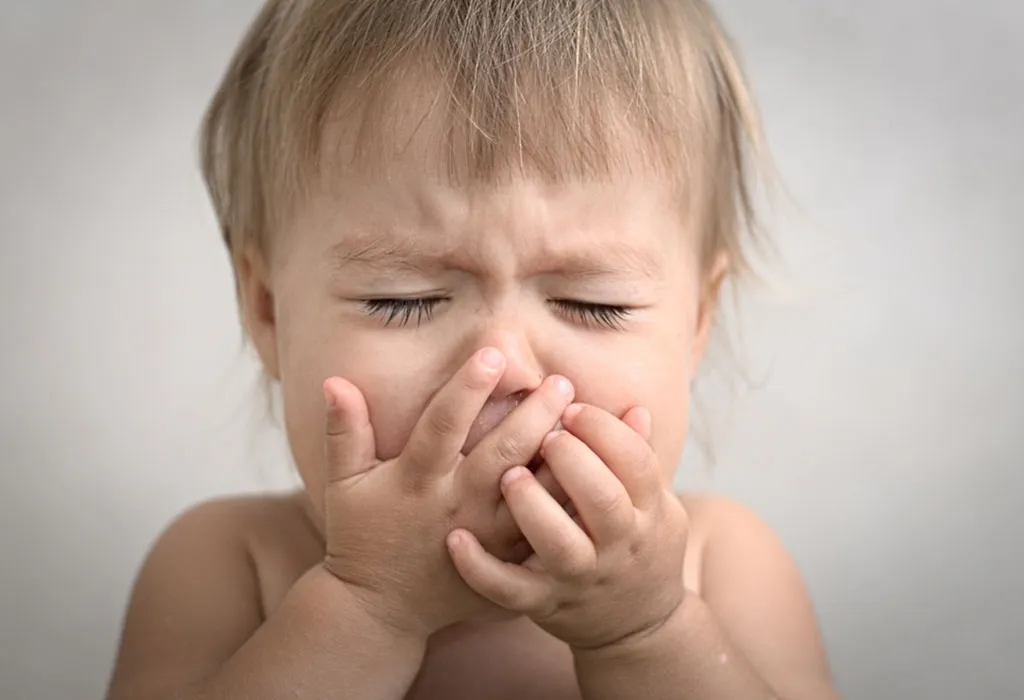 Fever Temperature for Babies
Fever Temperature for Babies
Fever in infants ranges between 100° F and 103° F. Temperature below 100° F is not a fever. For instance, at times, you may notice that your child’s cheeks are turning red, and his body is radiating heat. When you check the temperature using a thermometer, it reads somewhere around 99° F. You might think of rushing him to a doctor or might want to resort to medication. However, children having a rectal temperature lower than 100.4° F are considered normal. Parents need not panic in such a situation.
The body temperature of babies could vary due to various reasons like layered clothing, a warm bath, or physical activity. Sometimes, it is important to observe your child’s behaviour rather than keeping track of his temperature. For example, a baby with a temperature of 100.3° F may seem fatigued and fretful. On the other hand, a child with a 103°F temperature may look healthy and would jovially be playing with his toys.
Treatment for Viral Fever in Infants
If a baby is below three months of age and has a rectal temperature of any higher than 100.4° F, then he needs medical attention. Normal body temperature is 97.5-97.8 degrees Fahrenheit. It is advisable to take axillary temperature (underarm) in infants. Also, if your child is two years old or above with a temperature of 104° F or higher, you should immediately consult a doctor.
Mentioned below are the viral fever in baby treatment procedures that should be followed if your baby has a high fever.
- Firstly, consult a paediatrician. The doctor will likely prescribe vaccinations that should be given to your child at regular intervals as a protection against the flu.
- As viral infections are caused mostly due to climate change, especially during monsoon, parents must be cautious during this time.
- Do not give aspirin to your infant, as it increases the risk of Reye’s syndrome, which is a severe condition and can even prove to be fatal.
- Doctors usually recommend ibuprofen or acetaminophen to treat viral infections in children.
- To treat dehydration caused by vomiting and diarrhoea, give your baby enough liquids. This will help replace all the lost fluids.
- Giving your child a sponge bath with warm water is also recommended since it will help lower his body temperature.
Home Remedies for Viral Fever in Babies

Even though medicines prescribed by doctors will cure your child, other home remedies will help him recover soon. First, let the baby get plenty of rest and allow fresh air in his room. You may give him warm fluids like soup, water, and milk. The warm water will soothe his sore throat and recover the nutrients lost due to diarrhoea, while warm milk will help him sleep better. ORS is the best option to rehydrate your child. Mothers need to continue breastfeeding their infants because breast milk has all the essential nutrients that will help the baby combat infections.
You may use nose drops or a vaporiser to clear your baby’s blocked nose and help ease his breathing.
How to Prevent Viral Fever in Babies?
It is advisable not to send your child to school or childcare centres when he is unwell because this might worsen his condition. Also, he might end up spreading the infection to others. Let him stay at home until he recovers completely.
As a parent, you should teach your child the basics of hygiene, such as using tissues and throwing them into the bin after use and washing his hands or using a hand sanitiser after he coughs or sneezes. Also, make sure that your child’s clothes are washed separately and his utensils are sterilised. Offer them plenty of hydrating food items such as soup, ice popsicles, water, etc., to replenish the water lost during fever. Keeping a humidifier in your little one’s room can also bring them relief as it will keep the air moist and will not irritate the throat.
When to See a Doctor
Call your doctor immediately if you see the following signs in your baby:
- Your little one is younger than 3 months of age and has a temperature of 100.4˚F (38˚C) or above.
- Your little one is older than 3 months and has a temperature of 104 ˚F (40 ˚C) or higher.
- Shows signs of dehydration.
- Has a stiff neck
- Looks extremely drowsy and fussy.
- Experiencing vomiting, diarrhoea, and tummy aches.
FAQs
1. How can I help my baby feel more comfortable during viral fever?
By giving your little one plenty of fluids, including breast milk, soup, and water, you can make sure, they are hydrated. If your baby seems uncomfortable, you can give them a paracetamol in the required dose after consulting a doctor. Please doot provide any kind of medication to your baby unless prescribed by your little one’s paediatrician (1).
2. Are there specific viruses that commonly cause fever in babies?
The influenza virus, respiratory syncytial virus (RSV), and rhinovirus (RV) are commonly observed viruses causing fever in babies.
3. How can I differentiate between viral and bacterial fever in my baby?
A viral fever is caused by viruses, and a bacterial fever is caused by bacterial exposure.
In addition to the measures mentioned above, it is suggested that you keep mosquitoes away by using natural repellants. Also, don’t let any person suffering from flu come in contact with your baby. It will be better to instruct them to maintain some distance even if they wish to go near your child. So, instead of getting anxious, follow these methods with patience. Within three to four days, your child will start showing signs of recovery. If none of this is helping, you should seek advice from your paediatrician at the earliest.
Also Read:
Teething Fever in Infant
Fever After Vaccination in Babies
Home Remedies for Fever in Babies
Was This Article Helpful?
Parenting is a huge responsibility, for you as a caregiver, but also for us as a parenting content platform. We understand that and take our responsibility of creating credible content seriously. FirstCry Parenting articles are written and published only after extensive research using factually sound references to deliver quality content that is accurate, validated by experts, and completely reliable. To understand how we go about creating content that is credible, read our editorial policy here.







